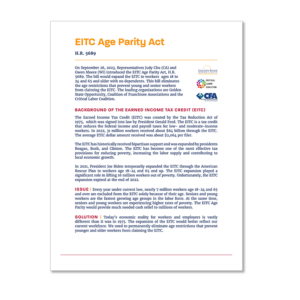Today’s economic reality for workers and employers is vastly different than it was in 1975 when the federal Earned Income Tax Credit (EITC) was created to support low-income workers.
The EITC is the nation’s largest poverty reduction tool. It also promotes workforce participation and stimulates local economic growth. In the tax year 2022, 31 million working families and individuals in every state received the EITC.
The problem: Currently, young workers (ages 18-24) and older workers (65 and over) are excluded from claiming the EITC if they don’t have children.

